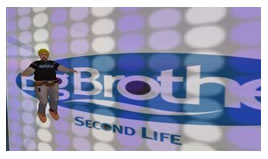 Reality TV programme, Big Brother, is moving to Second Life on 1 December, or “First virtual piglet Brother” as the BabelFish translator put it.
Reality TV programme, Big Brother, is moving to Second Life on 1 December, or “First virtual piglet Brother” as the BabelFish translator put it.
Starting today, Second Life players can apply to take part in it with fifteen participants being selected from three time zones.
The players will live in a glass-walled building, so other Second Life players will be able watch what goes on. The demands on the players is pretty heavy, given they have to spend at least eight hours a day playing the game.
The format of the Virtual BB will be the same as the TV show, with contestants being voted out until there’s only one left. The final will be on 31 December
 How do you temp a Second Life player to take part when they’re likely to not like, or possibly hate TV? Give them something they’d love … a tropical island in Second Life. Reuters report the value of it being worth about US$1,675 (£883).
How do you temp a Second Life player to take part when they’re likely to not like, or possibly hate TV? Give them something they’d love … a tropical island in Second Life. Reuters report the value of it being worth about US$1,675 (£883).
Endemol Netherlands Managing Director Paul Romer told Reuters, “Big Brother Second Life represents a fantastic opportunity to amass knowledge of the virtual world. In the future, we will use this experience to develop specific content for online communities.”
Given Endemol will have to take a certain degree of trust, as they won’t actually be able to meet the contestants, we’re hoping that some Second Lifers will get together and make some mischief by applying to get in.
As much as we’ve been tempted, we at Digital-Lifestyles have stayed away from Second Life – frankly we’re a little afraid of it. It’s the kind of thing we could see getting completely absorbed in – if not utterly obsessed.
The TV version of Big Brother has been dragging on for years now, so all we can assume is that they’re desperate to try to get people involved who have faded away from the TV show. One thing for sure is that the production costs of the Second Life version will be considerably cheaper that the over-blown TV show.
Endemol Holland (In Dutch obv)
Second Life
 A new survey has revealed that UK consumers are way down with streaming and downloading audio-visual content into their living room, but they’re not so keen on paying for the stuff.
A new survey has revealed that UK consumers are way down with streaming and downloading audio-visual content into their living room, but they’re not so keen on paying for the stuff.  The report found that half of those questioned weren’t prepared to pay a single Goddamn bean extra for streamed/downloaded content, with a further 18% only willing to cough up £2 per month for content, and 22% only happy to pay between £2 and £5.
The report found that half of those questioned weren’t prepared to pay a single Goddamn bean extra for streamed/downloaded content, with a further 18% only willing to cough up £2 per month for content, and 22% only happy to pay between £2 and £5.  According to Olswang’s research, easily-distracted, multi-tasking consumers are paying less attention to watching programmes, with 46% of respondents busy emailing and 43% web surfing while watching television.
According to Olswang’s research, easily-distracted, multi-tasking consumers are paying less attention to watching programmes, with 46% of respondents busy emailing and 43% web surfing while watching television. 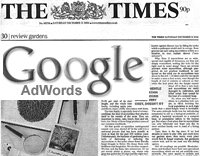 Google is set to announce a new advertising partnership with over 50 American newspapers, in an initiative designed to create an online marketplace to help Ye Olde Printe Media sell advertising electronically.
Google is set to announce a new advertising partnership with over 50 American newspapers, in an initiative designed to create an online marketplace to help Ye Olde Printe Media sell advertising electronically.  Launching as an early “alpha” trial, Google has said that it won’t initially charge for hosting the service, but expects to levy a ‘relatively modest commission’ if it takes off.
Launching as an early “alpha” trial, Google has said that it won’t initially charge for hosting the service, but expects to levy a ‘relatively modest commission’ if it takes off.  Google’s turbo-charged revenue increases (up 70 per cent in the third quarter) continue to give traditional media outlets the heebie-jeebies, as advertising revenues continue to crash in tabloid and regional titles across the UK.
Google’s turbo-charged revenue increases (up 70 per cent in the third quarter) continue to give traditional media outlets the heebie-jeebies, as advertising revenues continue to crash in tabloid and regional titles across the UK.  If ever you were in any doubt of the painfully high price of printer ink, a feature on tech website Gizmodo shows a graph representing the relative values of various liquids compared to blood.
If ever you were in any doubt of the painfully high price of printer ink, a feature on tech website Gizmodo shows a graph representing the relative values of various liquids compared to blood. 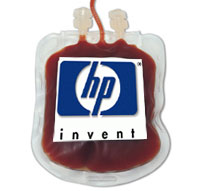 Penicillin comes in at around $0.6/ml, followed by vodka at $0.2/ml, bottled water at $0.1/ml and finally crude oil at something like $0.05/ml (it’s hard to be precise because the graph doesn’t come with a text breakdown).
Penicillin comes in at around $0.6/ml, followed by vodka at $0.2/ml, bottled water at $0.1/ml and finally crude oil at something like $0.05/ml (it’s hard to be precise because the graph doesn’t come with a text breakdown).  Punters have long complained about the outrageously high cost of printer ink – a 2003 study by the Consumer Association’s Which? Magazine found out that the humble smudgy stuff was priced
Punters have long complained about the outrageously high cost of printer ink – a 2003 study by the Consumer Association’s Which? Magazine found out that the humble smudgy stuff was priced  Global sales of camera phones are set to make up nearly half of the total of all mobile phone sales this year, with the figure expected to rise to 81 percent of all phones by 2010.
Global sales of camera phones are set to make up nearly half of the total of all mobile phone sales this year, with the figure expected to rise to 81 percent of all phones by 2010.  “In 2006, 1.3 and two mega pixel resolutions will become the minimum requirement for mid-tier to high-end phones and a 3.2 mega pixel resolution will be used for flagship products. This will increase to five mega pixels in 2007,” Milanesi said.
“In 2006, 1.3 and two mega pixel resolutions will become the minimum requirement for mid-tier to high-end phones and a 3.2 mega pixel resolution will be used for flagship products. This will increase to five mega pixels in 2007,” Milanesi said.  If you’re having problems thinking of that perfect technological widget to make your Christmas go with a seasonal swing, look no further than Brando’s fabulous feast o’ festive trinkets.
If you’re having problems thinking of that perfect technological widget to make your Christmas go with a seasonal swing, look no further than Brando’s fabulous feast o’ festive trinkets.  USB Fibre Optic Christmas Tree II
USB Fibre Optic Christmas Tree II USB LED Music X’mas Tree
USB LED Music X’mas Tree USB Drumming Santa
USB Drumming Santa You’ve probably seen the news yesterday that
You’ve probably seen the news yesterday that  Being the inquisitive little ferrets that we are, we jumped on to our ever-at-hand mobiles to try the same thing. Not expecting much, as we’re outside the US, you can imagine our surprise when we were given the option of downloading the app – but persisted with the US/Canada only malarky. We were warned that the app might not work correctly.
Being the inquisitive little ferrets that we are, we jumped on to our ever-at-hand mobiles to try the same thing. Not expecting much, as we’re outside the US, you can imagine our surprise when we were given the option of downloading the app – but persisted with the US/Canada only malarky. We were warned that the app might not work correctly. 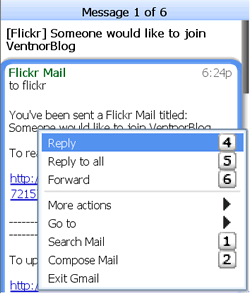 Argh .. the handset we used fell at the final hurdle, but we pressed on with some others until success! We checked in with
Argh .. the handset we used fell at the final hurdle, but we pressed on with some others until success! We checked in with 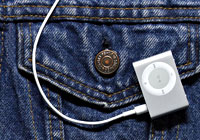 Apple has announced that the updated version of their teensy-weensy iPod Shuffle will be ready to tempt your wallet from today.
Apple has announced that the updated version of their teensy-weensy iPod Shuffle will be ready to tempt your wallet from today. 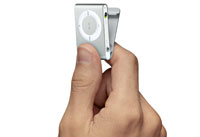 The Shuffle comes with a 1GB capacity – enough for around 240 tunes – and users can elect to play songs in sequence or randomly.
The Shuffle comes with a 1GB capacity – enough for around 240 tunes – and users can elect to play songs in sequence or randomly.  Apple has sold more than
Apple has sold more than  Windows system requirements
Windows system requirements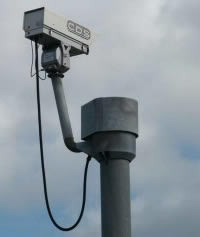 Britain’s Information Commissioner has published a study concluding that, within 10 years, surveillance of people living in the UK will be all-pervasive.
Britain’s Information Commissioner has published a study concluding that, within 10 years, surveillance of people living in the UK will be all-pervasive.  He added: “As ever-more information is collected, shared and used, it intrudes into our private space and leads to decisions which directly influence people’s lives.
He added: “As ever-more information is collected, shared and used, it intrudes into our private space and leads to decisions which directly influence people’s lives.